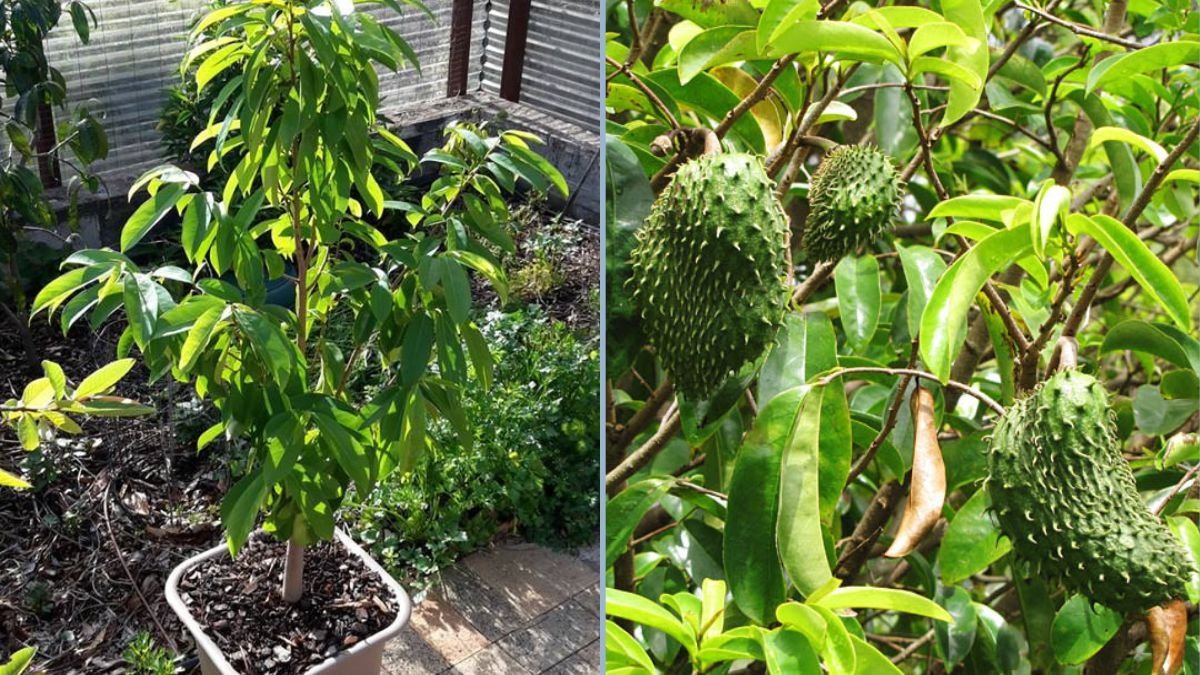Soursop (Annona muricata), also known as graviola, is a tropical fruit tree valued for its large, green, spiny fruits and sweet, tangy flavor. Beyond its delicious taste, soursop is prized for its medicinal properties, including antioxidants and potential health benefits. While traditionally grown in the ground, soursop can thrive in pots using modern air layering techniques, making it ideal for gardeners with limited space or for those looking to propagate new trees efficiently.
This comprehensive guide will explain how to grow soursop in pots using air layering, step-by-step instructions, and tips to ensure high success rates for healthy, fruit-bearing trees.
Why Grow Soursop in Pots?
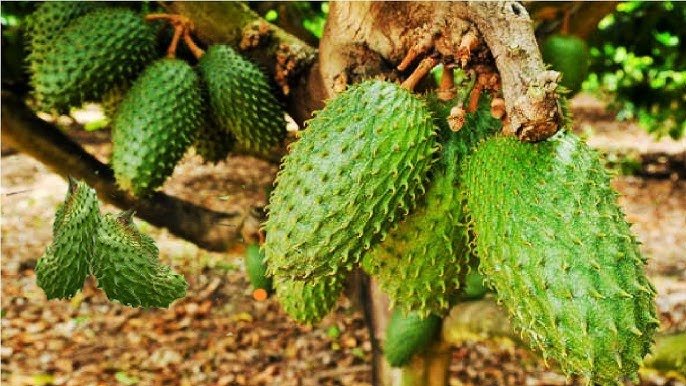
Growing soursop in pots offers numerous benefits:
- Space-saving: Ideal for balconies, patios, or small gardens.
- Controlled growth: Easier to manage soil, water, and nutrients.
- Disease prevention: Reduces exposure to soil-borne diseases.
- Easy propagation: Air layering produces strong, ready-to-plant saplings.
- Mobility: Potted trees can be moved to optimal sunlight or protected from harsh weather.
Whether for personal consumption or small-scale agriculture, potted soursop trees are a practical and rewarding choice.
Step 1: Selecting the Parent Tree
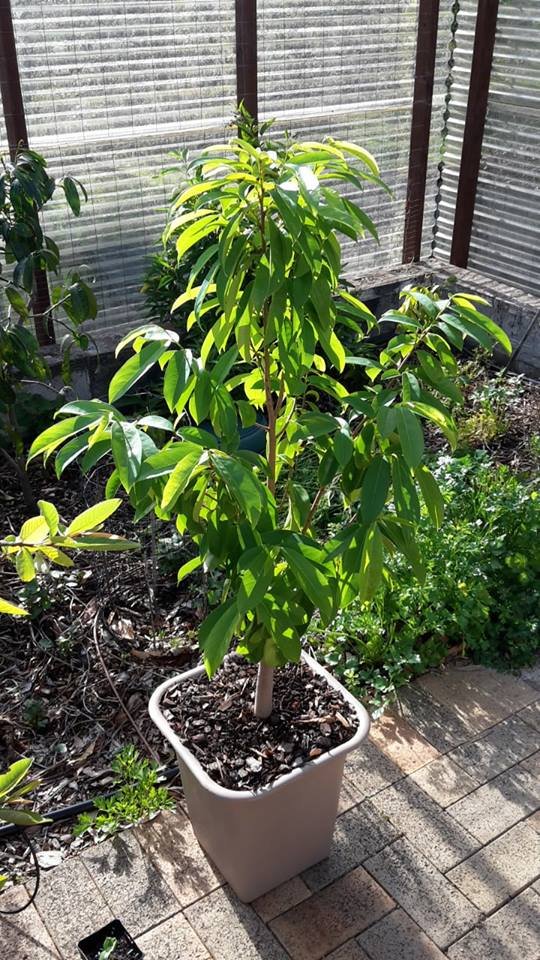
Successful air layering starts with choosing a healthy parent tree:
- Mature tree: Select a vigorous soursop tree that produces high-quality fruits.
- Healthy branches: Choose a branch about 1–2 cm in diameter, free from pests, diseases, or damage.
- Optimal location: Select a branch located in the middle or upper part of the tree for better sunlight exposure.
Selecting a strong, healthy branch ensures a high survival rate and robust saplings.
Step 2: Preparing for Air Layering
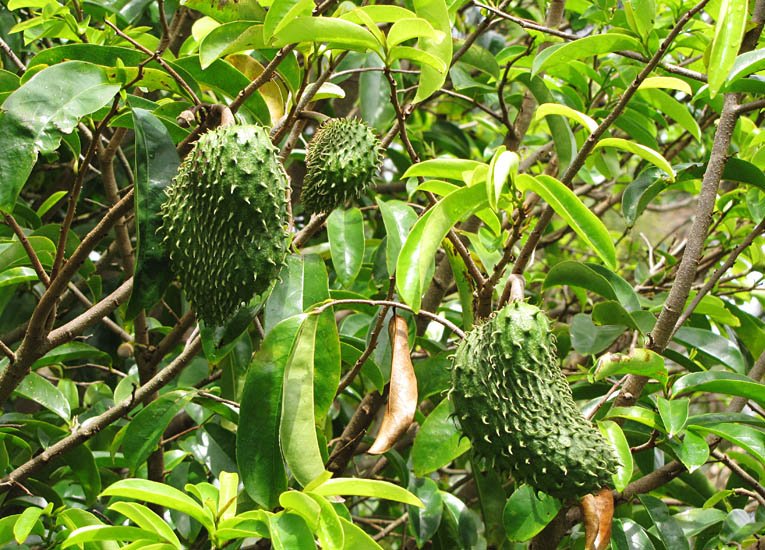
Air layering involves inducing root formation on a branch while it remains attached to the parent tree. Here’s what you’ll need:
- A sharp knife or grafting tool
- Rooting hormone (powder or gel)
- Moist sphagnum moss or soil mix
- Plastic wrap or polyethylene sheet
- String or tape to secure the setup
Proper preparation is crucial for ensuring the branch develops a healthy root system.
Step 3: Performing the Air Layering Technique
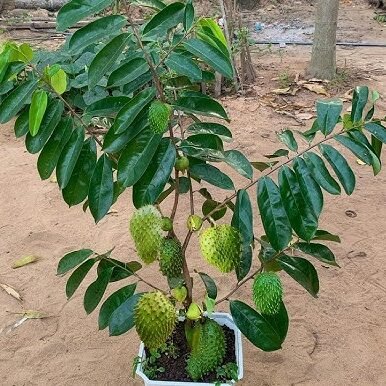
Follow these step-by-step instructions for effective air layering:
1. Girdling the Branch
- Choose a healthy branch about 1–2 cm thick.
- Remove a ring of bark about 2–3 cm wide to expose the inner cambium layer.
- Make a clean cut to prevent infection and ensure effective rooting.
2. Applying Rooting Hormone
- Apply rooting hormone to the exposed area to stimulate root growth.
- Ensure even coverage around the girdled section for maximum effectiveness.
3. Wrapping with Moist Medium
- Take moist sphagnum moss or a soil-coconut husk mix.
- Wrap the medium around the girdled area, covering it completely.
- Ensure the medium remains moist but not waterlogged.
4. Securing the Layer
- Wrap the moss or soil with plastic wrap to retain moisture.
- Tie both ends securely with string, tape, or wire.
- Make small holes in the plastic to allow air circulation while preventing drying.
5. Maintaining the Air Layer
- Check periodically to ensure the medium remains moist.
- Keep the branch shaded and protected from extreme sunlight or wind.
Step 4: Root Formation and Development
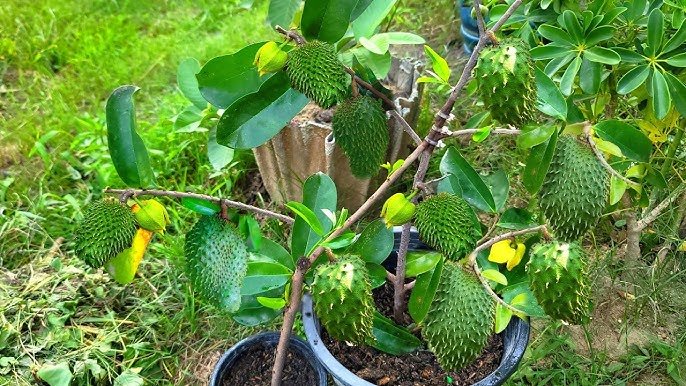
Roots typically begin forming within 4–8 weeks, depending on environmental conditions and branch health:
- Signs of root formation: White, fibrous roots visible through the plastic wrap.
- Duration: Allow the roots to grow until they are thick, healthy, and well-established.
- Moisture maintenance: Keep the moss or soil consistently moist to promote robust root growth.
Patience is essential, as premature removal can damage the sapling.
Step 5: Cutting and Transplanting
Once the roots are well-formed, the new soursop sapling is ready to be transplanted into a pot:
1. Cutting the Branch
- Carefully cut below the rooted section using a sharp, sterilized knife.
- Avoid damaging the new roots during the process.
2. Selecting a Pot
- Choose a large plastic or clay pot with drainage holes.
- The pot should be at least 30–40 liters to accommodate root growth.
3. Preparing the Soil
- Use well-draining soil enriched with organic compost or manure.
- Mix in sand or perlite to improve aeration and prevent waterlogging.
4. Planting the Sapling
- Place the sapling in the pot, ensuring roots are spread evenly.
- Backfill with soil and gently firm to eliminate air pockets.
- Water thoroughly after planting.
Step 6: Caring for Potted Soursop Trees
Proper care ensures strong growth and eventual fruiting:
Watering
- Keep the soil consistently moist, especially during the first few months.
- Avoid overwatering, which can lead to root rot.
Fertilization
- Apply balanced organic fertilizers or compost monthly.
- Use NPK fertilizers to promote vegetative growth and fruiting later on.
Sunlight
- Provide 6–8 hours of sunlight daily for optimal growth.
- If indoors or in shade, gradually acclimate the sapling to full sun.
Pruning
- Remove damaged or weak branches to encourage strong growth.
- Shape the tree to maintain manageable size for pot cultivation.
Pest and Disease Management
- Monitor for aphids, mealybugs, scale insects, or fungal infections.
- Use organic treatments such as neem oil or horticultural soap as needed.
Step 7: Fruit Production
Soursop trees propagated by air layering generally fruit faster than seed-grown trees:
- Time to fruiting: Typically 2–3 years after air layering.
- Flowering: Trees produce clusters of greenish-yellow flowers.
- Fruit development: Fruits mature within 4–6 months, depending on climate and care.
- Harvesting: Fruits are ready when slightly soft and emit a sweet aroma.
Consistent care, proper fertilization, and pest management improve fruit quality and yield.
Advantages of Air Layering Soursop
- Faster establishment: Rooted saplings are ready to grow independently within weeks.
- True-to-type trees: Ensures fruit quality and characteristics are identical to the parent tree.
- High survival rate: Properly rooted saplings adapt quickly to pots or field planting.
- Space efficiency: Ideal for urban gardening or limited space cultivation.
- Cost-effective: Propagates multiple saplings from a single parent tree.
Air layering is an advanced yet accessible propagation technique that maximizes success for home gardeners and small-scale farmers.
Tips for Maximum Success
- Choose healthy, disease-free parent trees.
- Select semi-hardwood branches with good vigor.
- Use sterilized tools to prevent infection.
- Maintain consistent moisture in the rooting medium.
- Monitor roots regularly and avoid premature cutting.
- Use large pots and well-draining soil for transplanted saplings.
- Provide adequate sunlight, water, and nutrients to promote growth.
- Protect young trees from pests, wind, and extreme temperatures.
Following these tips can significantly improve success rates and ensure robust, fruit-bearing soursop trees.
Conclusion
Growing soursop in pots using air layering is a highly effective method for propagating healthy, true-to-type trees. This technique allows gardeners and farmers to produce multiple saplings from a single parent tree, accelerates fruiting, and ensures high-quality fruits.
With proper selection of parent trees, careful preparation, consistent monitoring, and attentive care, air layering makes soursop propagation accessible and highly successful. Whether for personal consumption, small-scale farming, or urban gardening, this method provides a sustainable, efficient way to grow one of the most delicious and medicinal tropical fruits.
By mastering the air layering technique, you can enjoy healthy, fruit-bearing soursop trees in pots, even in limited spaces, ensuring a bountiful harvest for years to come.
